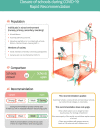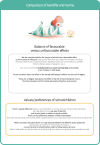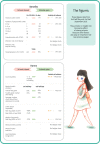Closing schools for SARS-CoV-2: a pragmatic rapid recommendation
- PMID: 34192193
- PMCID: PMC7868123
- DOI: 10.1136/bmjpo-2020-000971
Closing schools for SARS-CoV-2: a pragmatic rapid recommendation
Abstract
Background: In Belgium, schools closed during the first lockdown in March 2020, with a partial reopening in May. They fully reopened in September. During the summer, infections started to increase in the general population, speeding up in September. Some measures were taken to limit social contacts but those were insufficient to mitigate the exponential rise of infections in October. Children were still receiving all lessons at school at that time and it was questioned whether this position was tenable. We systematically compared the benefits and harms of closing primary and secondary schools and developed a recommendation.
Methods: A multidisciplinary panel, including school pupils and teachers, educational experts, clinicians and researchers, produced this recommendation in compliance with the standards for trustworthy rapid guidelines. The recommendation is based on data collected through national surveillance or studies from Belgium, and supported by a rapid literature review.
Results: Closing schools during the first lockdown probably resulted in a large learning delay and possibly led to more cases of child abuse. We are uncertain about the effect on the infection rate, hospitalisations, transmission rates, mental health of children, teachers and parents. The panel concluded that the balance of benefits and harms of closing schools clearly shifts against closing schools. Detrimental effects are even worse for vulnerable children. This recommendation is affected by the local virus circulation.
Conclusion: The guideline panel issues a strong recommendation against closing schools when the virus circulation is low to moderate, and a weak recommendation against closing schools when the virus circulation is high. It does not apply when the school system cannot function due to lack of teachers, too many children who are at home or a shortage of support services. As the results of international studies are consistent with Belgian study results, this recommendation may also be relevant internationally.
Keywords: COVID-19; adolescent health; epidemiology.
© Author(s) (or their employer(s)) 2021. Re-use permitted under CC BY-NC. No commercial re-use. See rights and permissions. Published by BMJ.
Conflict of interest statement
Competing interests: None declared.
Figures
References
-
- COVID-19 Rapid Evidence Service | National Collaborating Centre for Methods and Tools Rapid Review Update 9: What is the specific role of daycares and schools in COVID-19 transmission [Internet], 2020. Available: https://www.nccmt.ca/covid-19/covid-19-rapid-evidence-service [Accessed 05 Nov 2020].
-
- Guyatt GH, Oxman AD, Vist GE, et al. . Grade: an emerging consensus on rating quality of evidence and strength of recommendations. BMJ 2008;336:924–6. 10.1136/bmj.39489.470347.AD - DOI - PMC - PubMed
-
- Guyatt GH, Oxman AD, Kunz R, et al. . Going from evidence to recommendations. BMJ 2008;336:1049–51. 10.1136/bmj.39493.646875.AE - DOI - PMC - PubMed
MeSH terms
LinkOut - more resources
Full Text Sources
Medical
Research Materials
Miscellaneous



